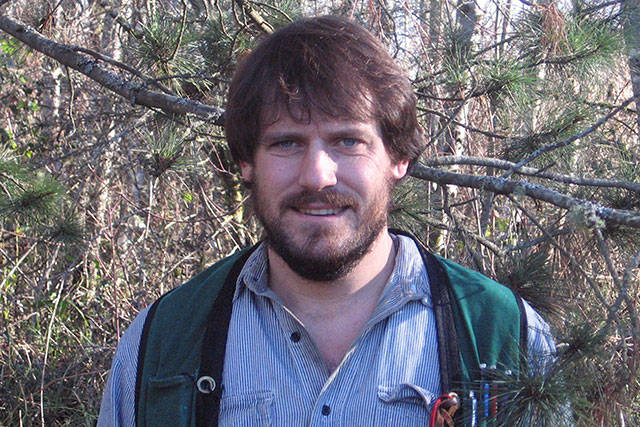Over the past few years, news stories of devastating forest fires in California and other parts of the West, along with smoky summers here in the Northwest, have raised alarm in rural communities across Western Washington. Many Vashon landowners want to know what they can do to reduce risks from wildfires.
The most important thing we can do to address wildfire and drought risk over the long term is to reduce our carbon emissions quickly. Warmer and drier spring and summer weather, along with dense vegetation, are the primary causes of recent increases in fire activity. Climate change projections indicate that the very dry year we experienced in 2015 will become the new normal over the next several decades and then get even hotter and drier if carbon emissions are not dramatically reduced.
In order to ensure that additional actions to reduce wildfire risk are effective, it’s important to understand the differences in how fire functions in forests on the east side vs. the west side of the Cascades in Washington. Historically, forests at mid to low elevations on the east side of the Cascades experienced fire every five to 25 years, with some areas extending to 50 or more years. These forests are highly adapted and dependent on fire. The frequency of fire, combined with lower productivity of these forests, meant that fuels levels were kept low in most places. Fires thus mostly burned on the ground with shorter flames that tree species such as ponderosa pine, western larch and Douglas fir could withstand.
Fire suppression and logging of the larger fire-resistant trees over the last century has dramatically changed these fire-dependent forests. The number of trees and amount of fuel has increased. When fires do burn, they tend to burn with much taller flames that kill many more trees. Fortunately, large-scale efforts are underway across the West to restore more fire-adapted conditions by thinning trees and reducing ground fuels through use of prescribed fire and mechanical methods.
Forests west of the Cascade Crest in Washington have a different relationship with fire. Most forests experience fire every 200 to 400 years and were historically burned by large fires in the late summer or fall that spread rapidly across hundreds of thousands of acres. Dry east winds, combined with the large amount of biomass that accumulated between fires, caused these fires to burn hot with flames tall enough to kill most of the trees. After a fire resets them, west side forest generally develops for centuries without fire and are not dependent on frequent fire to maintain them.
Currently, human ignitions or lightning strikes start fires every year in Western Washington. Fortunately, these ignitions rarely intersect with strong east winds and dry fuel conditions. Even though the climate is getting warmer and drier, the probability of fire at any one location is still less than 0.1% per year in Western Washington, according to recent Forest Service modeling. Without high winds, fires spread slowly, burn many fewer acres and kill a smaller portion of the trees. In the lowlands and foothills that have gentle slopes and lots of roads, they are generally easy to put out quickly. Fires not driven by east winds can get bigger, especially on steeper ground in the backcountry, such as the recent Norse Creek fire.
Large-scale thinning and prescribed fire treatments to try to reduce the likelihood or size of large fires aren’t effective and don’t fit the ecology of west side forests. Wind-driven fires often burn right through treatments. Also, shrubs and trees grow back quickly after a treatment. Thinning has other ecological benefits in Western Washington forests, but fire risk reduction is not one of them. These large fires are like earthquakes in that they are rare, can cause great damage, and cannot be stopped through human actions.
We can reduce the impacts of forest fires, however. First, disaster planning can better prepare us for these events and reduce losses. Second, homeowners can research and adopt fire-wise principles. Building with fire-resistant materials, removing flammable vegetation close to the home and incorporating other design features can significantly reduce the risk losing homes to wildfire. Creating “defensible space” by thinning trees and reducing understory vegetation within 50 to 150 feet of homes and 10 to 30 feet adjacent to key access roads will help firefighters protect your home, especially when wind speeds are on the lower end. Regularly re-treating the understory vegetation as it grows back is critical. Felling existing dead trees, or snags, is generally not necessary.
While headlines about forest fires and climate change are certainly alarming, it is important to take a deep breath and remember that the probability of fires, especially large, wind-driven events, is still low in Western Washington. Our energy should be focused on reducing carbon emissions, preparing our communities for large wildfire events and implementing fire-wise strategies to reduce risk of losing homes.
— Derek Churchill is a forest health scientist with the Washington Department of Natural Resources. He has lived on Vashon for 20 years.



